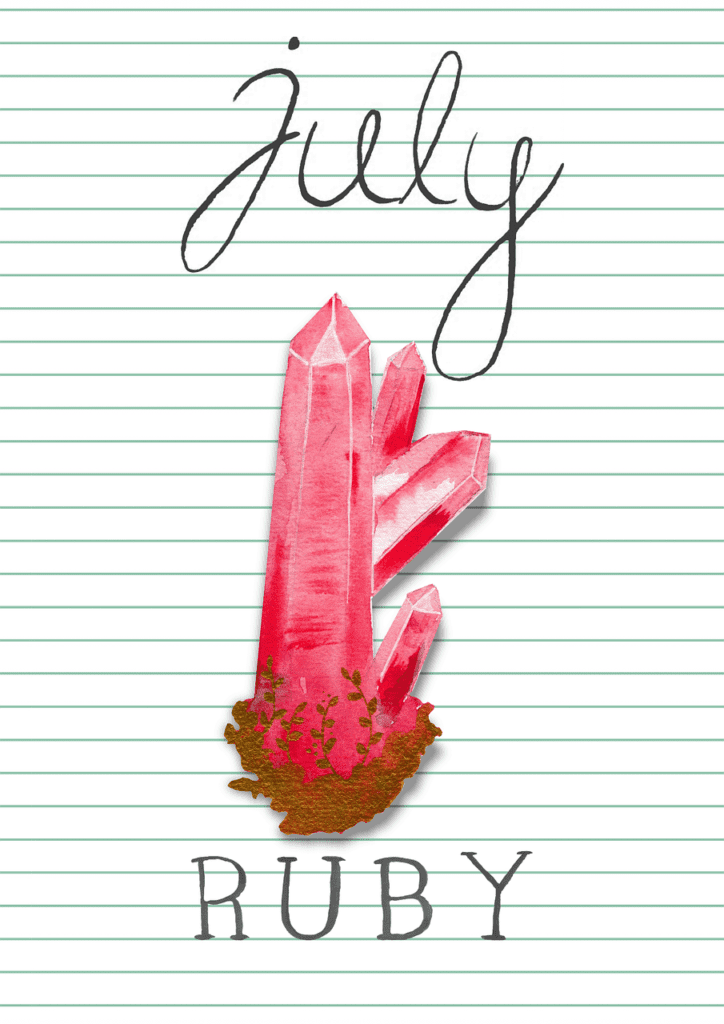Back to: The Magic of Birthstones MB1
One of the most popular traditional jewelry stones, ruby is exceptionally durable. Its colors — always red — can reach vivid levels of saturation. Fine-quality rubies are some of the most expensive gemstones, with record prices over $1,000,000 per carat.

Symbolism
Rubies have long been connected with physicality and strength. Favored by warriors, rubies were thought to be intimately connected with the human body. They were credited with increasing the strength and stamina of the wearer. Rubies were also thought to calm anger and help the wearer navigate passionate social situations.
Color
Rubies are a radiant red gemstone. Technically, rubies and sapphires are both corundum. Rubies are corundum gems that have a dominant red hue. However, you can find rubies with orange or pink undertones.
WHERE ARE RUBIES FOUND?
Our search for the July birthstone starts in Myanmar (formerly known as Burma), one of the oldest recorded sources of fine rubies. For more than five centuries, the Mogok area in Myanmar has produced some of the most sought-after rubies – vibrant red beauties softened by light-scattering inclusions and a glowing red fluorescence. The region is a place of weathered marble and ancient Buddhist temples.
Since the late 20th century, Vietnam has been another important source for the July birthstone. The Luc Yen region in northern Vietnam, where rainforest-clad mountains rise over broad paddy fields, produces rubies of red to purplish red color. Farther south, the Quy Chau district has also yielded many fine rubies. Today, artisanal miners work the soil in hopes of finding a gem that will change their fortunes.
Mozambique is an important new source for the July birthstone. This African nation is home to the prolific mines at Montepuez. Rubies found there have been compared to the famed gems of Mogok.
For many years in the late 1900s, the ruby deposits along the border between Thailand and Cambodia were the major source of rubies in the marketplace. Other important producers of the July birthstone include Afghanistan, Tajikistan, Pakistan, Sri Lanka, Kenya, Tanzania and Madagascar.
RUBY BIRTHSTONE CARE & CLEANING
Rubies are often heat treated to remove purplish coloration, leaving a purer red. The process can also remove “silk” (minute needle-like inclusions) that can cause a gem to appear lighter in tone and be more opaque. The trade typically accepts heat treatment, as it is stable to normal conditions of wear and care. However, rubies may also be subjected to lattice diffusion treatment and dyeing. In lower-quality material, surface-reaching fractures and cavities may be filled with a glass to decrease their visibility so the gem appears more transparent. Some of these treatments may make the ruby more vulnerable to damage during normal wear and care.
Before you buy, always ask if your ruby has been treated and by what method. The Federal Trade Commission requires disclosure of treatments that affect a gemstone’s perceived value. A GIA Identification Report is important in identifying if a stone is natural or synthetic and whether it has been treated in any fashion.
In most cases, the July birthstone can be safely cleaned with warm soapy water and a soft brush. Ultrasonic and steam cleaners are usually safe for untreated, heat-treated and lattice diffusion–treated stones. Glass-filled or dyed stones should only be cleaned with a damp cloth.